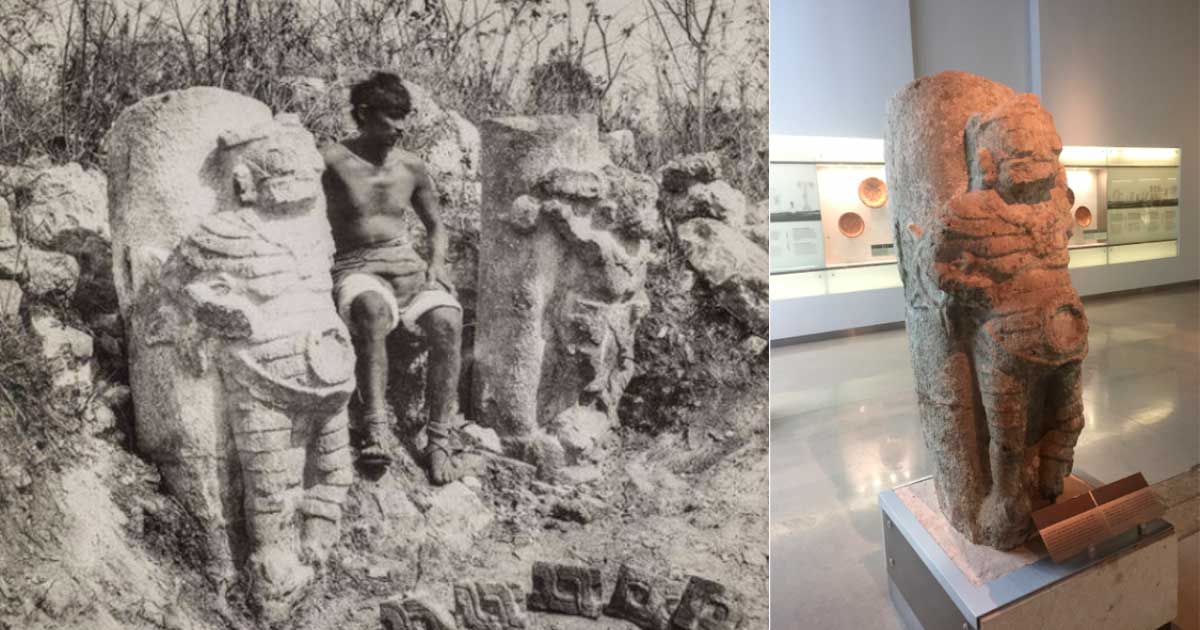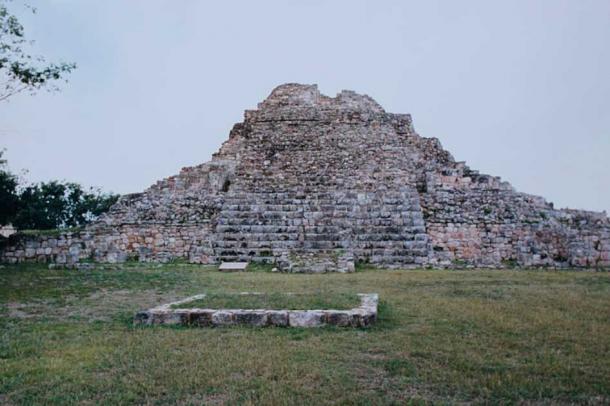Welcome to DU!
The truly grassroots left-of-center political community where regular people, not algorithms, drive the discussions and set the standards.
Join the community:
Create a free account
Support DU (and get rid of ads!):
Become a Star Member
Latest Breaking News
General Discussion
The DU Lounge
All Forums
Issue Forums
Culture Forums
Alliance Forums
Region Forums
Support Forums
Help & Search
Latin America
Related: About this forumExamining Out-of-Place Stone Figures from the Forgotten City of Oxkintok

UPDATED 2 NOVEMBER, 2022 - 13:52 CLIFF DUNNING
I’ve had an affinity for the Maya civilization for almost 30 years, and between working with native elders, vacations, and leading tour group visits to Mexico, I can vouch for the mystical nature of these people. It’s easy to see why television programs like Ancient Aliens are attracted to the Maya; they represent a complete departure from the norms we associate with an ancient culture. The Greeks, Romans, and Babylonians left us written records of their society, what they thought at the time, and descriptions of their daily activities. We have only fragments of information on the Maya lifestyle and nothing on why they chose to build pyramids, their interests in astronomy, and numerous other topics which appeared to have consumed their scientists, ruling elite, and shaman.
Unfortunately, for over one hundred years, we’ve been fed a history of the Maya by university-sponsored archaeologists, who, (without reason) chose to ignore the living descendants of this civilization, who to this day, still practice the sacred sciences handed down by their ancestors. This disastrous practice has led to vast misinterpretations, half-truths, and theories, damaging our understanding of the Maya.
Searching for the Truth
From 1995 – 2010, I spent my summers in the presence of a Maya DayKeeper/ Shaman, who described an entirely different version of his ancestors, their way of life, and how they perceived the world. Few people realize there is an early period (The First People) or pre-Maya civilization that dates from 6000 BC and shows every indication of being significantly older. From what I have learned, it now appears the Classic Maya inherited a good deal (if not all) of their knowledge from these early people, who developed a unique, and still undeciphered, language and science. As fantastic as it sounds, the pre-Maya culture may have had its beginnings as far back as the Pleistocene epoch.

Oxkintok, Yucatan, Mexico, digital copy of print. (Gary Todd / Public Domain )
The ruins of Oxkintok (Osh-kin-took), which means “the city of the three cutting suns,” sits approximately 60 miles (66.6 km) south of Merida, the capital of Yucatan, Mexico. We first read about the city in 1839 in the popular book “ Incidents of Travel Yucatan ” by the explorer writer and his artist companion, John Stephen and Fredrick Catherwood. My first visit to Oxkintok was telling. Besides the remains of a few buildings, most of the civic (central meeting area) were flattened, crushed by some massive force. All that was left were piles of stones. ( We see much the same throughout the Yucatan Peninsula of Mexico, where there appear to have been vast bodies of water, which pulverized most of these cities.) In my ongoing research on Maya cities in the Yucatan, I came across several geological studies that indicate massive flooding and good evidence for giant tsunamis over thousands of years.
Although I’m cautious not to write that the damage by tsunamis is the work of a biblical flood (9500 BC), it’s a fact that substantial volumes of water continually passed over the Yucatan peninsula and settled for long periods.
Out-of-place Artifacts
Located in a small courtyard just north of the city center, the fragments of a small temple with columns have been restored. An early photograph, (photo A below), taken at the turn of the century shows unusual columns with figures, partially exposed in sediment. Columns with figures are not uncommon in Classic Maya design and most are carved in relief style (inset from the surface), but what we see at Oxkintok is entirely out of the norm.
More:
https://www.ancient-origins.net/artifacts-ancient-technology/stone-figure-oxkintok-0017473
InfoView thread info, including edit history
TrashPut this thread in your Trash Can (My DU » Trash Can)
BookmarkAdd this thread to your Bookmarks (My DU » Bookmarks)
0 replies, 1073 views
ShareGet links to this post and/or share on social media
AlertAlert this post for a rule violation
PowersThere are no powers you can use on this post
EditCannot edit other people's posts
ReplyReply to this post
EditCannot edit other people's posts
Rec (10)
ReplyReply to this post